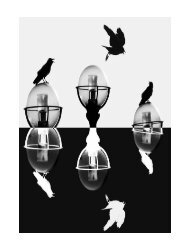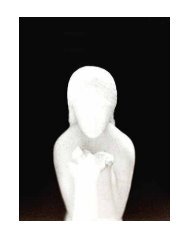Odds and Ends Essays, Blogs, Internet Discussions, Interviews and Miscellany
Collected essays, blogs, internet discussions, interviews and miscellany, from 2005 - 2020
Collected essays, blogs, internet discussions, interviews and miscellany, from 2005 - 2020
You also want an ePaper? Increase the reach of your titles
YUMPU automatically turns print PDFs into web optimized ePapers that Google loves.
reports on what they thought of these poems. The poems are numbered 1 to 13. Of poem 11, he received this
response from one of its readers:
Outside of the mood, I felt no real personal connection, no personal emotion. If they had been my words
winging on, or my closest friend’s-if he had alluded to my death, or let me apply it so-I should have
felt it more deeply (Richards’s emphasis). 11
Whilst Richards acknowledges the validity of such a response he is cautious as to its universal applicability:
The dangers are that the recollected feelings may overwhelm and distort the poem and that the reader
may forget that the evocation of somewhat similar feelings is probably only a part of the poem’s
endeavour. 12
Whilst I am not trying to draw a direct parallel between Richards’s poetic and Forrest-Thompson’s, I do see a
common trajectory towards an attempt to stabilise poetic texts.
Notes
1. Roland Barthes, ‘The Death of the Author’, in Authorship: From Plato to the Postmodern, ed. by S. Burke (Edinburgh: Edinburgh
University Press, 1995), pp.125-30 (p.128).
2. Barthes, p.129.
3. Veronica Forrest-Thompson, ‘The Garden of Prosperine’, in New British Poetries: The Scope of the Possible, ed. by R. Hampson
and P. Barry (Manchester: Manchester University Press, 1993), p.118.
4. Forrest-Thompson, in New British Poetries, p.119. The line, ‘I lie alone. I am aweary, aweary’ alludes to the lines in Tennyson’s
‘Mariana’: ‘She said, “I am aweary, aweary, / I would that I were dead!”‘.
5. Suzanne Raitt, ‘The Possibles of Joy’: Alison Mark on Veronica Forrest-Thomson’, Jacket, 20, December 2002, (accessed 1st
August 2007). http://jacketmagazine.com/20/raitt.html
6. Forrest-Thompson, Poetic Artifice (Manchester: Manchester University Press, 1978), p.41.
7. Forrest-Thompson, Poetic Artifice, p.16.
8. Brian Kim Stefans, ‘Veronica Forrest-Thomson and High Artifice’, Jacket, 14, July 2001, (accessed 1 August 2007).
http://jacketmagazine.com/14/stefans-vft.html
9. I. A. Richards, Practical Criticism: A Study of Literary Judgement (London: Kegan Paul, Trench, Trubner & Co. Ltd, 1930), p.15.
10. Richards, Practical Criticism, p.15.
11. Richards, Practical Criticism, pp.147-48.
12. Richards, Practical Criticism, p.239.
Ambiguity and Abstraction in Bob Dylan’s Lyrics
First published in Isis
2007
To many people contemporary poetry is a turn-off. The reason for this is that the majority of these poems are boring.
They are so because they fail to enable people to identify with them. The bulk of modern poetry is no longer about
reader identification but about information transfer, information that could just as easily be conveyed in a prose
form. These poems are written merely to convey the poet’s thoughts and feelings about a specific event, situation or
place he or she has experienced or is in the act of experiencing. The poet is not necessarily concerned with whether
the reader is moved or not by the poem, so long as he or she understands clearly the information the poet is trying to
convey. This may consist of some “important” insight gained from an experience, or it could be (as is usually the case)
a prosaic statement or commentary about some commonplace aspect of contemporary life.
The popular song at its best, however, does more than this. It excites both the imagination and emotions; it enables
you to unlock your own highly personal box of images, memories, connections and associations. This is most readily
evidenced in the songs of Bob Dylan. Even the most perfunctory of his songs is able to do this to a greater extent than
most “serious” poetry. This is because his songs (and to a lesser extent songs in general) frequently utilise imprecise
and abstract statements rather than particular and specific ones. Contemporary poetry, on the other hand, does the
exact opposite of this: it utilises particular and specific statements rather than imprecise and abstract ones. This
21




